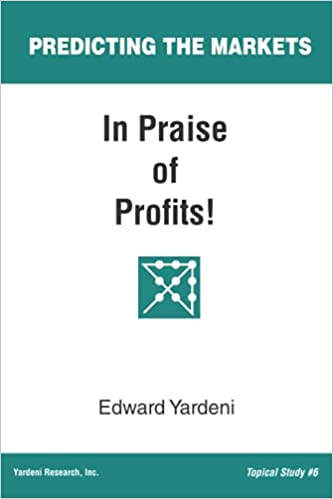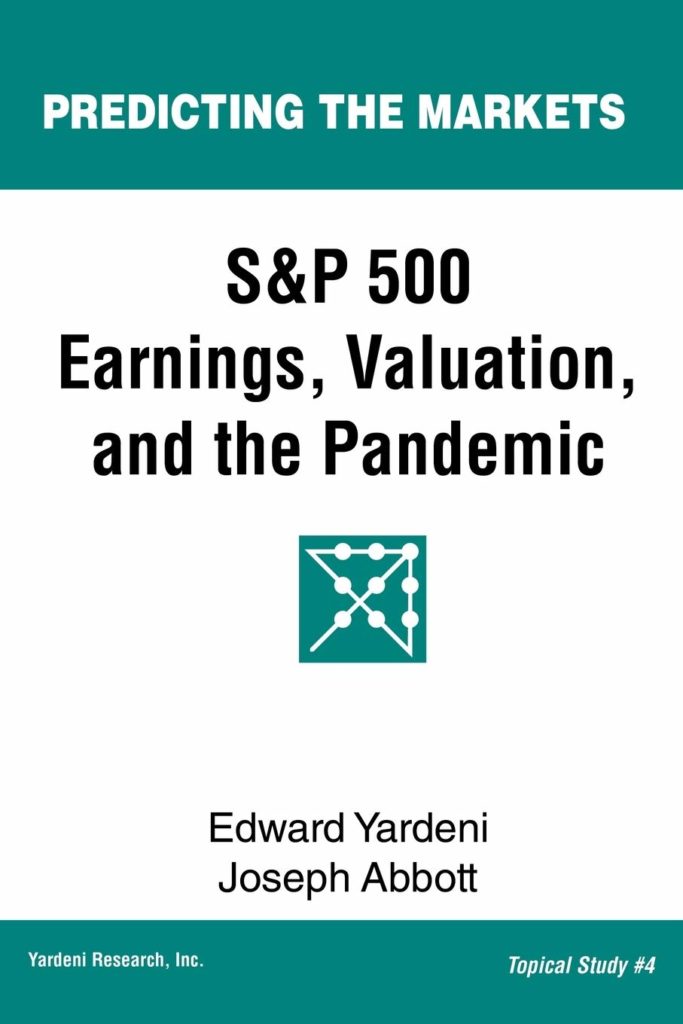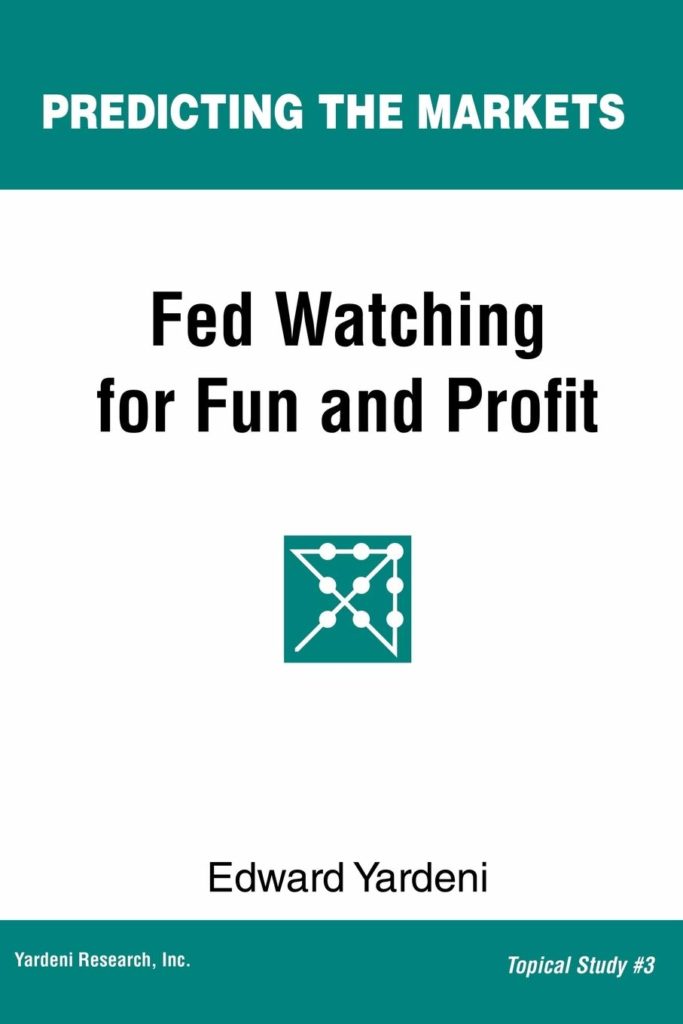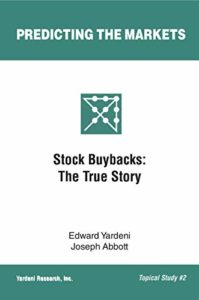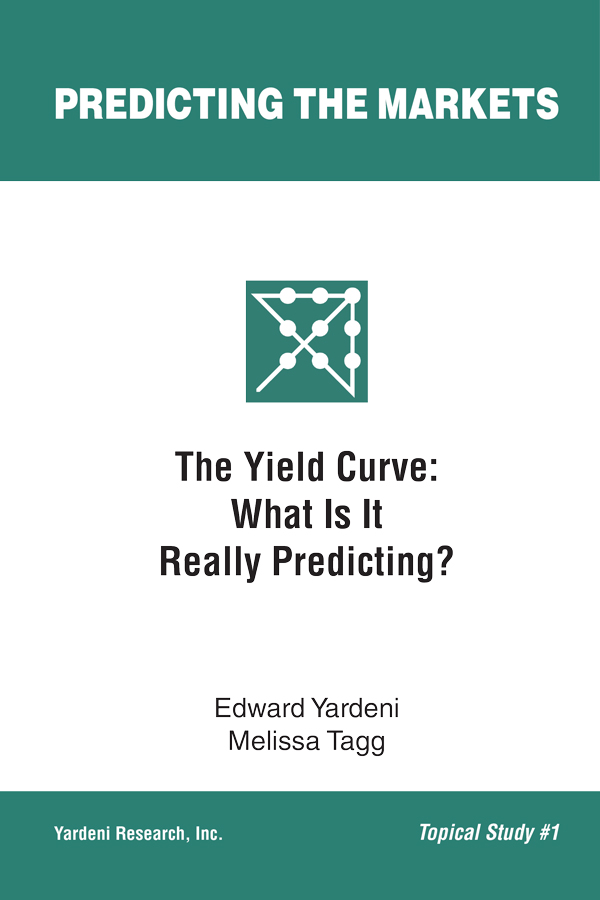Topical Studies
Topical Studies examine issues,
which were discussed in my book,
Predicting the Markets: A Professional Autobiography (2018),
but in greater detail and on a more current basis.
Predicting the Markets Topical Study #6 (September 2021)
In Praise of Profits!
There has been much confusion about corporate profits. That’s because there are several measures of profits and very little understanding of, or even interest in, how they differ. As a result, there has been lots of sloppy analysis and misinformed discussion of such important issues as the central role of profits in economic growth, the trend of profits, the corporate tax rate, the profit margin, profits’ share of national income, and corporate share buybacks.
The confusion has played into the hands of progressives. They claim that free-market capitalism, driven by the profit motive, causes wage stagnation and results in both income and wealth inequality. They want the government to redistribute income and wealth by increasing taxes on the rich and on corporations. They refuse to acknowledge that profit-driven capitalism is the source of our nation’s widespread prosperity. They say that the relevant data support their claims; that’s not so, as I demonstrate in this book. I conclude that the entrepreneurial variety of capitalism should be allowed to flourish. If it does so, so will we all.
As I will show in this study, the progressives’ narrative of the relationship between profits and prosperity is wrong and misleadingly pessimistic. In short, it’s backward: Market-driven profit is the source of prosperity, not its nemesis. Ironically, profit is what drives the progress in standards of living that progressives, with their policy approaches, claim to be championing. But progressives seem blind to the progress that has been achieved and perpetually want to do more. In my opinion, progress has been made despite their persistent policy interventions thanks to the power of the profit motive to deliver profits and prosperity in a free-market economic system.
Predicting the Markets Topical Study #5 (March 17, 2021)
The Fed and the Great Virus Crisis
Edward Yardeni & Melissa Tagg
Updated Charts
Endnotes
Appendices
The outlook changed dramatically for the worse on March 11, 2020, when the World Health Organization declared that Covid-19 had spread around the world. It was officially a pandemic. That marked the beginning of the world war against the virus. It was a war on three fronts: the health front, the economic front, and the financial front. The Fed responded by the lowering its key interest rate to zero on March 15 and implemented an open-ended program of quantitative easing on March 23, “QE4ever.” Various liquidity facilities that were used during the Great Financial Crisis were reopened and new ones added. Fiscal policy joined the battle with substantial spending programs.
It all amounted to trillions of dollars of support. In this study, the authors explain why it worked so well on the financial and economic fronts. They also consider the potential long-term consequences on inflation, financial stability, and the role of government in the economy.
Predicting the Markets Topical Study #4 (November 19, 2020)
S&P 500 Earnings, Valuation, and the Pandemic
Edward Yardeni & Joseph Abbott
Updated Charts
Endnotes
Appendices
In this unique primer, Edward Yardeni and Joseph Abbott, two of the world’s most experienced and widely followed investment strategists, provide investors with a practical understanding of the forces that drive the stock market. This study focuses on the S&P 500 stock price index, examining how it is determined by the earnings of the 500 companies that are included in the index and the valuation of those earnings by the stock market. Notwithstanding occasional bear markets, the S&P 500 has been a great investment over the years—so much so that “S&P” could stand for “Success & Profit.”
The first chapter in this study covers the alternative measures of earnings for the S&P 500 and why they favor forward earnings among them. The second chapter analyzes varaious models of valuation, again focusing on the S&P 500. The final chapter uses the resulting analytical framework to review how it has worked in good times and bad, focusing on the Great Financial Crisis and the Great Virus Crisis.
The market discounts analysts’ consensus estimates for revenues and earnings this year and next year on a time-weighted basis. Calculating weekly forward revenues and forward earnings from analysts’ estimates can provide very timely insights into the performance of the global economy as well as the underlying trends in quarterly revenues and earnings.
While this framework provides a disciplined approach to analyzing the macroeconomic fundamentals that are driving earnings, the valuation of those earnings by investors will continue to be much more subjective than objective. Nevertheless, there are fundamental factors that influence valuation multiples. Some, like inflation and interest rates, will always be important in assessing the valuation question. Other factors may be relatively new and worthy of careful analysis.
Predicting the Markets Topical Study #3 (March 9, 2020)
Fed Watching For Fun and Profit
Appendices
In predicting the major stock, bond, commodity, and foreign exchange markets around the world, nothing is more important than to anticipate the actions of the Federal Reserve System’s Federal Open Market Committee (FOMC), which sets the course of monetary policy in the United States. By controlling the key interest rate in the money markets and other monetary variables, the FOMC has an enormous impact on the global economy and financial markets.
Watching the Fed closely are not only Wall Street’s economists and investment strategists but also reporters and commentators at the major financial news organizations. In fact, anyone involved in investment matters and business activities anywhere in the world needs to watch the Fed, because its policies have powerful impacts not only on the US economy but also on the global economy.
For participants in the financial markets, anticipating a policy change by the Fed and positioning an investment portfolio or speculative trade accordingly can result in big gains. Conversely, failing to anticipate a move by the Fed can result in big losses or missed opportunities for gains.
In this unique primer, Dr. Edward Yardeni, one of the world’s most experienced and widely followed “Fed watchers,” helps investors to understand the FOMC’s decision-making process, anticipate its moves, and profit from those insights.
Predicting the Markets Topical Study #2 (August 20, 2019)
Stock Buybacks: The True Story
Edward Yardeni & Joseph Abbott
Updated Charts
Some of Wall Street’s stock-market bears have been growling about buybacks as well. They’ve been arguing that buybacks have rigged the stock market in favor of the bulls. They claim that companies buy back their stock to boost their share prices, using debt to finance this dubious activity. As a result, corporate balance sheets have become increasingly leveraged, which makes them vulnerable to a recession. Widespread corporate leverage, in turn, would exacerbate any economic downturn. The bears therefore remain bearish and expect to be vindicated with a vengeance, eventually.
The authors explain that the bull market in stocks has boosted buybacks to a greater extent than buybacks have boosted the market, whereas the opposite is more widely believed. Rising stock prices increase the attractiveness of paying some of employees’ compensation with stock grants. Buybacks then are necessary to offset the dilution of earnings per share. While the latest bull market, like previous ones, has been driven by rising earnings, it’s a Wall Street legend that earnings per share have been boosted artificially and significantly by stock buybacks. It may seem that way only because what lift buybacks have provided to stock prices is highly visible, occurring in the open market, whereas companies’ need to offset stock issuance with stock repurchases is less apparent.
The authors also refute Progressives’ pervasive narrative that most Americans’ standards of living have stagnated in recent decades and that buybacks per se have worsened income inequality.
Predicting the Markets Topical Study #1 (July 2, 2019)
The Yield Curve: What Is It Really Predicting?
Edward Yardeni & Melissa Tagg
Updated Charts

